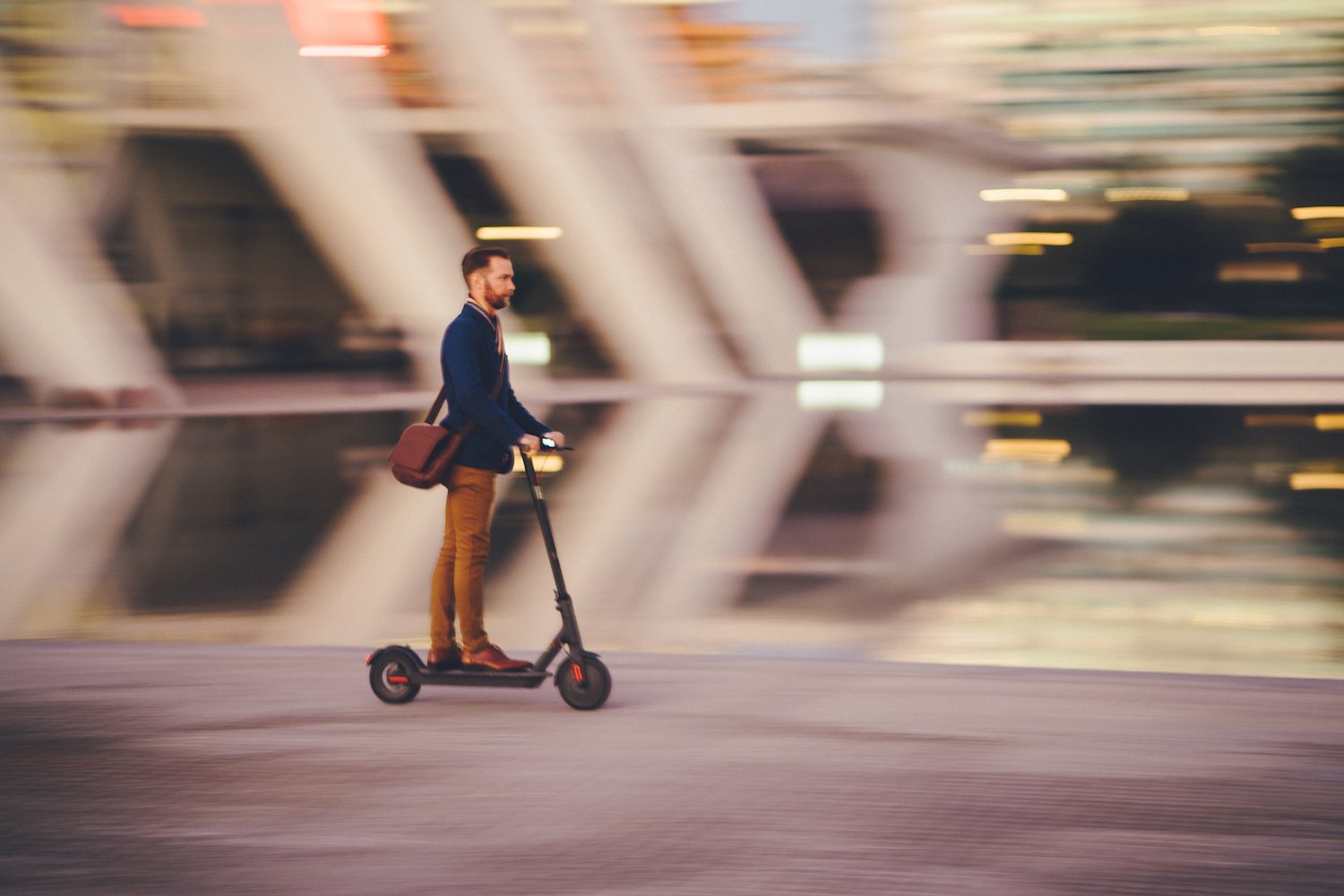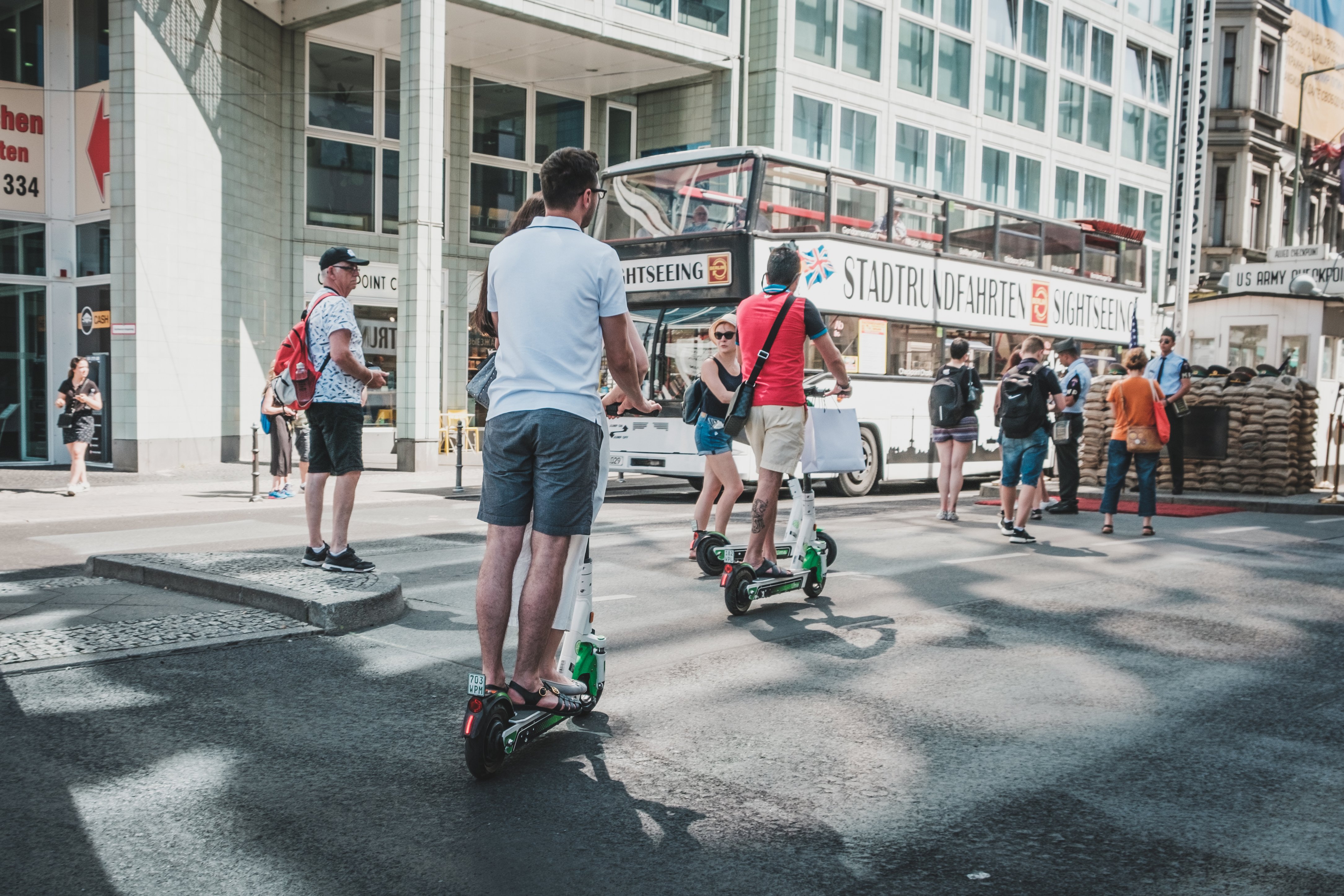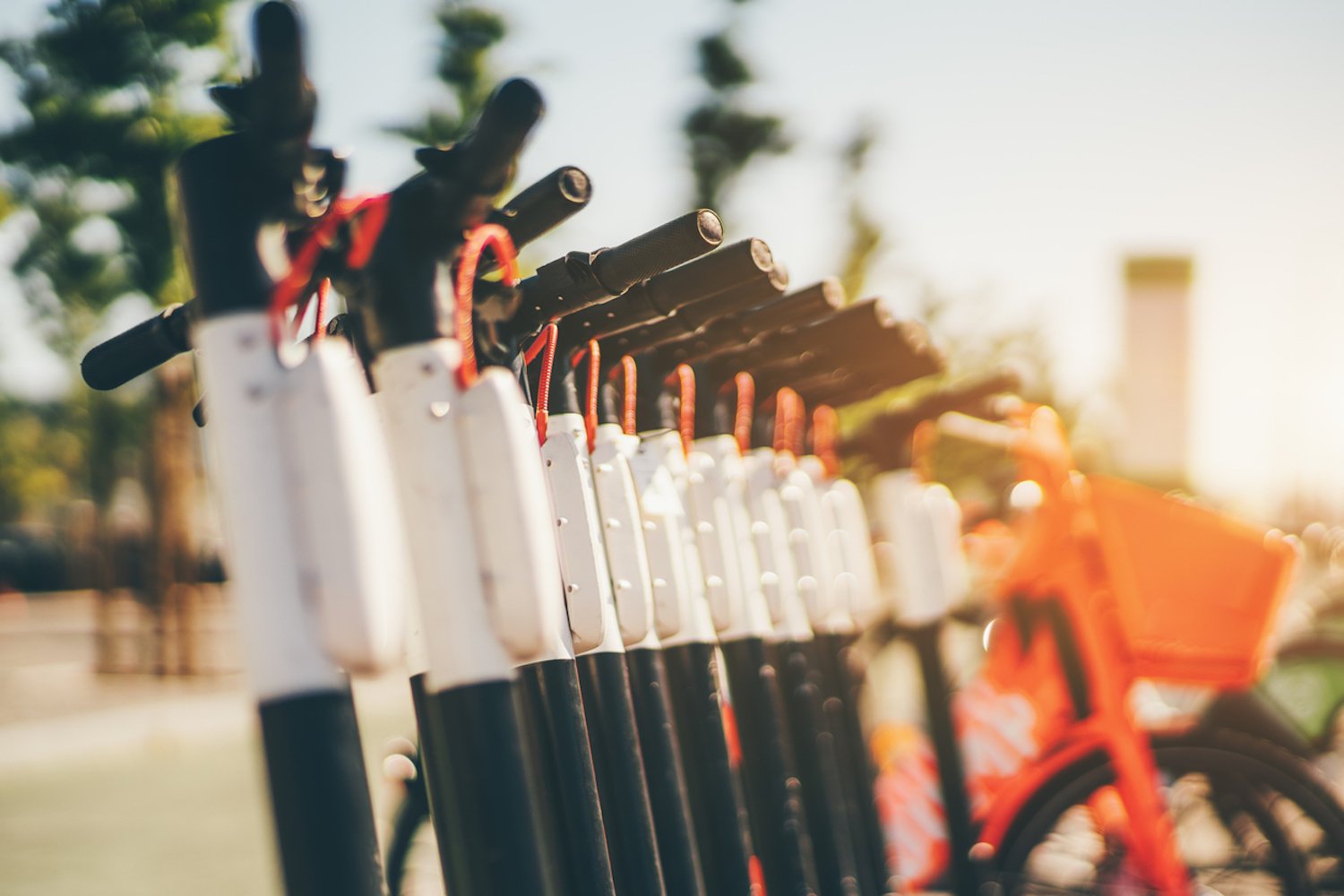Meet the juicers: using location tech to find and recharge e-scooters

E-scooters have revolutionized our urban landscape, and a new workforce – called "juicers" – are using location technology to ensure they are recharged and ready to ride.
Say hello to the finders and rechargers of lost scooters. The “juicers" use location data to help them keep electric scooters, electric bikes and ride-sharing rolling by connecting the machines with their users and EV charging points. But with the disruption caused by the pandemic, will shrinking cities put juicers out of work or will the rise of secondary cities change the playing field

Location technology syncs up the riders, the vehicle and the juicers.
A juicer's life is not easy. The business is cutthroat, sometimes dangerous, and requires bulk harvesting and charging to produce any income.
In order to make lost e-scooters easier to find, Lime launched a location platform system in 2019 that allows juicers to reserve units they want to corral. Even with excellent location intelligence systems in place, the scooters don't always end up in the most courteous locations.
"I've picked up some from shallow water around Mission Bay and Kohimarama, some worked fine afterward, others are completely dead," says New Zealand university student and part-time juicer Tom Morton.
"Looking for [e-scooters] is a bit like hide-and-seek."
Traffic management systems and location technology are used to thwart scooter-hoarding – another challenge.

Read more: The truth about two-wheel transport? Bikes and scooters are better with maps.
The task of retrieving and recharging units pays an average of US$3 per e-scooter; however, an e-scooter with a completely dead battery pays up to US$20 once it's recharged and back in action. This has led to some unscrupulous juicers scooping up easy-to-find units, stashing them at their homes and waiting for the batteries to run dead so they can make more money.
Tommy Mecklenburg is a juicer working in West Lafayette, Indiana. He's worried the hoarders could ruin the scooter-sharing system for everyone. In an interview with WLFI he said: “It's all about your profit loss and if Bird's taking a loss because these people are hoarding them like they are and they're not making any money, they're gonna pull the Birds from West Lafayette," said Mecklenburg. “It makes it really inconvenient for the people that are out here trying to make a living."
Over in Arlington, Virginia, consultant Joel Kirzner earns extra cash after work by picking up e-scooters low on charge. Using multiple scooter apps, units in his area are displayed on his phone's map. And if he can reach them before other local juicers, he'll be rewarded with cash in his bank account.
"It's like Pokémon Go and you make money," he says.
In 2018, scooter-sharing systems started launching in cities around the world serving as a harbinger of the smart city movement. At the end of 2020 estimates pegged the worldwide sales number at 50 million units. By 2028, the number is expected to grow to 129 million.
Servicing and controlling the numbers of available scooters is key to success. Dockless bike-sharing platforms were blamed for creating an oversupply that clogged city sidewalks and irked urban dwellers. “Bike companies took the approach of growth at all costs, but that's not what we do," said Patrick Studener, vice president, Bird, in an interview with the BBC. “In every city, we start with 100 or 200 scooters, then we scale up into the demand that we see. Day to day, we scale up and down with demand."
Current discussions about urban mobility and ride-sharing now veer into how COVID-19 accelerated the notion of shrinking cities. Last January, in the depths of the pandemic, Lime announced it was pulling out of 12 markets worldwide. Despite the cutbacks, Lime's CEO Brad Bao released a statement at the time saying: “We are confident that Lime will be the first next-generation mobility company to reach profitability."

Read more: UK trials of electric scooters could pave the way for scooter deliveries.
Urban planners point to a number of cities in the UK, Europe and the US as examples of city shrinkage. On the other hand, an examination of transit and population location trends should also consider the impact of rapidly growing secondary cities.
Overcrowding and the cost of living in many of the major cities are pushing populations towards locations previously considered to be less desirable, including West Lafayette, Indiana. Cities Alliance, an NGO based in Belgium, says that secondary cities “...are the fastest-growing urban areas. Some 75 percent of the world's population live in urban settlements of fewer than 500,000 people. This number will only increase. Secondary cities, especially in African countries, are expected to double or even triple in population over the next 15 to 25 years."
The shifting movements of populations will continue to influence urban infrastructure of current and future cities. The need for traffic management, public transportation and mobility solutions will not fade away. Location technology will continue to assist urban planners as transportation will encompass everything from ride-hailing services to bike routing. As long as there is electric mobility, the world will need a new crop of juicers to keep everything charged up and ready to ride.
Have your say
Sign up for our newsletter
Why sign up:
- Latest offers and discounts
- Tailored content delivered weekly
- Exclusive events
- One click to unsubscribe